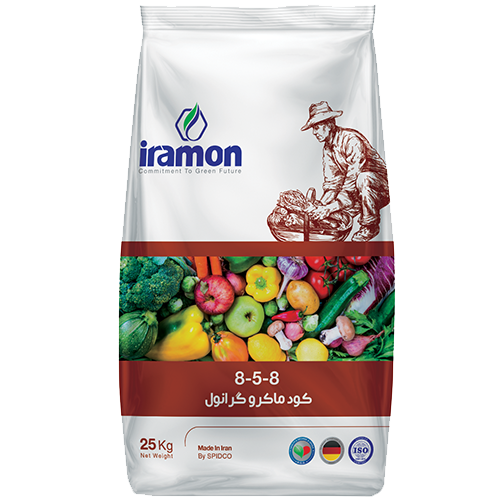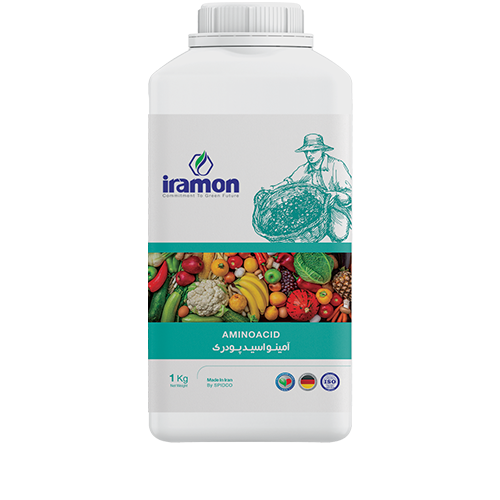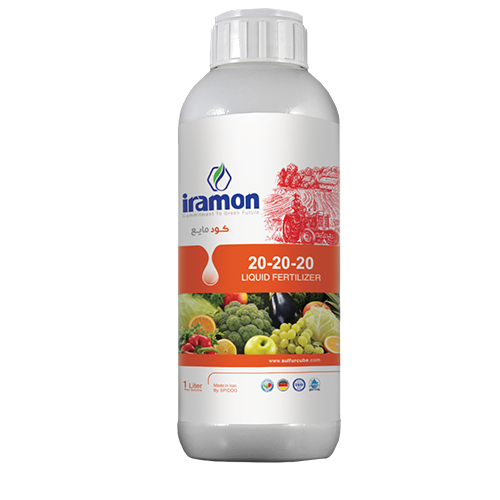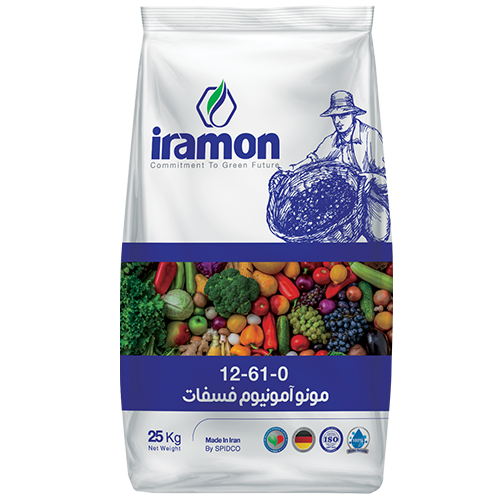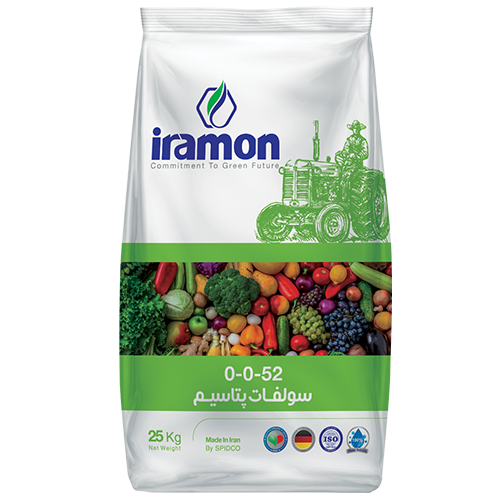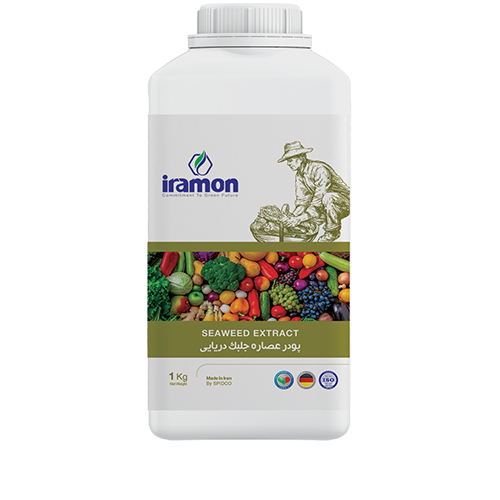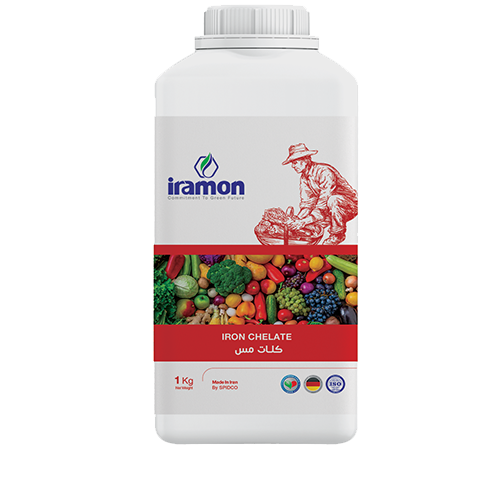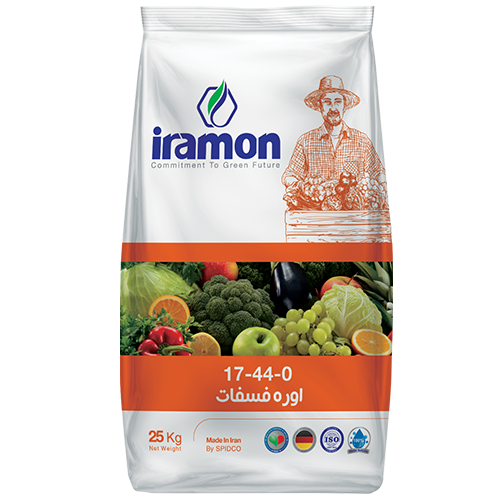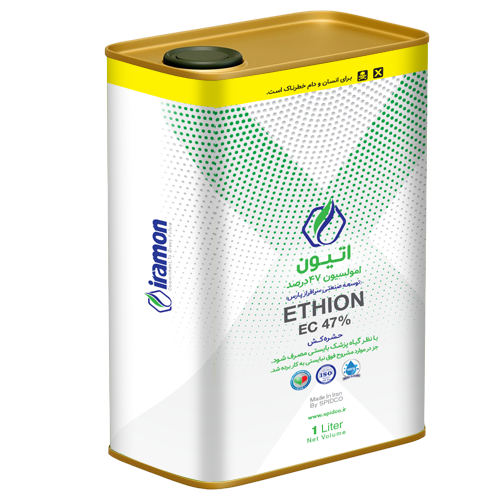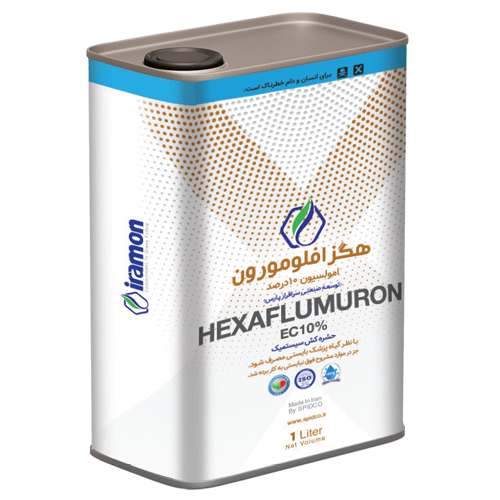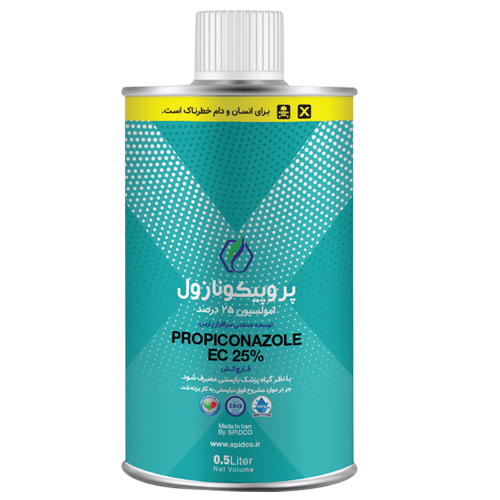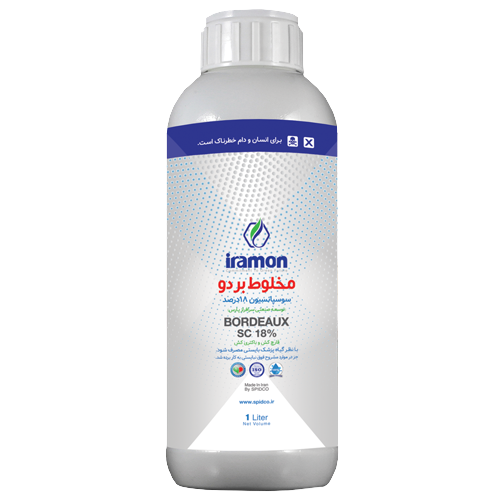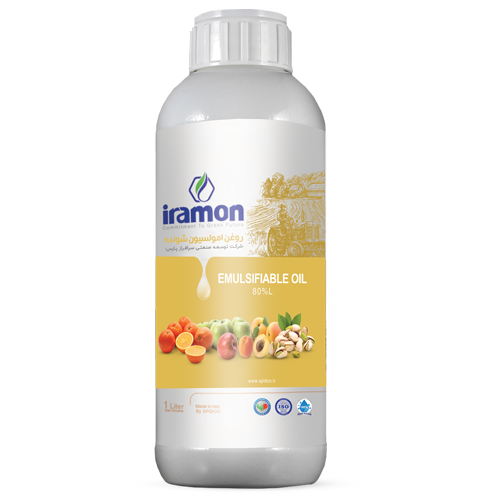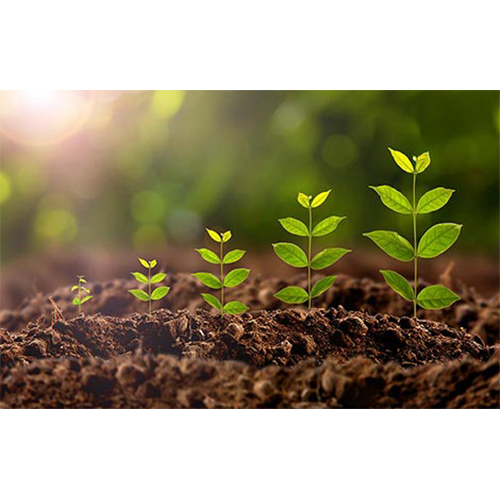
Today, the production of cut flowers and ornamental plants is very important in the world. Balanced nutrition is one of the most important factors in improving the yield and quality of cut flowers after harvest (Malkoti, 2003). Carbon, oxygen and hydrogen are the 3 main elements in the biochemical synthesis of organic substances (sugar, fat, protein, etc.). The carbon dioxide that is absorbed through the stomata provides the oxygen and carbon required by the plant and the water absorbed by the roots provides the necessary hydrogen and oxygen. Other nutrients required by the plant are classified into the groups of high consumption elements, main elements and low consumption elements. Antagonism between elements, inappropriate pH levels and temperature changes cause leaf color change and nutrient deficiency (Mercurio, 2007). Today, the production of cut flowers and ornamental plants is very important in the world. Balanced nutrition is one of the most important factors in improving the yield and quality of cut flowers after harvest (Malkoti, 2003). Carbon, oxygen and hydrogen are the 3 main elements in the biochemical synthesis of organic substances (sugar, fat, protein, etc.). The carbon dioxide that is absorbed through the stomata provides the oxygen and carbon required by the plant and the water absorbed by the roots provides the necessary hydrogen and oxygen. Other nutrients required by the plant are classified into the groups of high consumption elements, main elements and low consumption elements. Antagonism between elements, inappropriate pH levels and temperature changes cause leaf color change and nutrient deficiency (Mercurio, 2007).
Classification and working principles of food
By definition, mineral nutrients have special and essential roles in plant metabolism. Based on the effect of food on plant growth, it is called high-consumption (macro) or low-consumption food. Another classification, which is based on physical and chemical properties, divides food into metals (potassium, calcium, magnesium, iron, manganese, zinc, copper and molybdenum) and non-metals (nitrogen, sulfur, phosphorus, and chlorine) divide. A mineral nutrient can act as a component of an organic structure, activating enzyme reactions, or as an electric charge carrier and osmotic regulator (Marschner, 1996).
Nitrogen
Nitrogen is an important element in plants and is a component of chlorophyll molecules and therefore plays an important role in photosynthesis (Faghria, 2009). Nitrogen is completely mobile in the soil, so the symptoms of its deficiency can be seen in old leaves (Hasandokht, 2016). Nitrogen plays an essential role in the production of proteins, nucleic acids and coenzymes (Barker and Pilbaum, 2007). The presence of large amounts of usable nitrogen in the soil in the early stages of plant growth increases the growth and as a result the plant matures quickly, but if it is abundant throughout the entire period of plant growth, it often leads to a lengthening of the growing season. This point is very important because in the case of some crops that are cultivated in areas with a limited growth period or in places where early autumn frosts may cause great damage to fruit trees, prolonging the growth period will be harmful (fat). , 1385). The need of plants for this element is very high in the early stages of growth, and it decreases with the age of the plant (Bentojones, 1996).

Nitrogen is absorbed by the roots in the form of ammonium and nitrate ions (Faghria, 2009). Nitrogen absorbed by the plant becomes amide and amide combines with acid and produces amino acid (Hasandekht, 2016). Nitrogen, like other elements, is transported to the leaves by the wood vessels, where it is converted into organic compounds (amino acids) through a metabolic reaction, and finally these compounds are distributed to other parts of the plant through phloem vessels. Mercury, 2007)
Potassium
It is an element that has good mobility through the phloem vessel and easily moves from the oldest tissues to the youngest tissues (Mercurio, 2007). This element is absorbed by the plant in the form of K+ (Babadai Samani, 1387) and the most important sources of potassium supply are potassium nitrate, potassium sulfate and potassium chloride (Rostaei, 1381). The amount of potassium consumption in plants is after nitrogen. It is more than other elements, but because the soils often have abundant amounts of usable potassium, therefore, adding potassium fertilizers to such soils does not have an effect on the growth of plants (Foot, 2016). Potassium is an element that is osmotically active, it is important in regulating the turgorescence of plant cells. Most plants contain large amounts of potassium, of which a very small amount is fixed in the cell structure (Sater, 2014). Potassium is not present in the organic compounds of the plant, but it affects the synthesis of proteins and the circulation of sugars and is responsible for the turgorescence of the cell (Fagria, 2009; Mercurio, 2007). Potassium plays an essential role in the activity of enzymes, absorption and transfer of iron, photosynthesis, reduction of respiration, loading and transfer of materials in phloem vessels, opening and closing of stomata, increasing root growth (Faghria, 2009; Barker and Pilbaum, 2007).
Potassium deficiency causes necrosis of the leaf margin. If the deficiency conditions continue, the stems will be shortened, (Barker and Pilbaum, 2007), the buds will become necrotic, and the color will change and the flowers will shrink. Deficiency of this element is mostly seen in clay soils with high cation exchange capacity. Also, the presence of excessive amounts of calcium, ammonium, and especially magnesium causes the symptoms of deficiency to intensify (Mercurio, 2007).

Phosphorus
The need for this element is less than the two elements nitrogen and potassium (Babadai Samani, 2017). Phosphorus is relatively mobile in plants. Most of the phosphorus is absorbed by the plant in the form of primary orthophosphate (Hasandokht, 2016). Phosphorus is mainly a part of the nucleic acid structure of DNA and RNA, and it is also a part of phospholipids, i.e. fatty substances, which play an essential role in the membrane structure. Therefore, the lack of phosphorus has serious consequences for the cell, because the formation of new genetic materials in the nucleus and cytoplasm and new membranes around the cell and its various organelles is prevented. Phosphorus is also sensitively involved in all stages of energy transfer, because ATP and its synonyms consist of three phosphates attached to one nucleotide (Sater, 2014).

Magnesium
This element is part of the formation of chlorophyll molecules (Mercurio, 2007). Magnesium is one of the mobile elements in the plant, and its deficiency causes interveinal chlorosis in old leaves, and in case of severe deficiency, the whole leaf becomes pale yellow and eventually turns brown and disappears (Hasandokht, 2016) and root growth are reduced and become dark red (Fagria, 2009). The cofactor of many enzyme and receptor reactions is protein, and it plays a role in regulating membrane channels (Barker and Pilbaum, 2007), maintaining ribosome structure, respiration, and the formation of sugars (Faghria, 2009). It is absorbed in the form of Mg2+ ions and is more mobile than calcium in the plant. Magnesium deficiency occurs frequently in sandy soils with low pH or high levels of calcium and potassium (Mercurio, 2007).

Sulfur
Sulfur is absorbed in the form of sulfate (SO42-) from the soil and sulfur dioxide from the air (Hasandokht, 2016). This element plays a role in the structure of a number of amino acids, a large number of enzymes (Fagria, 2009; Mercurio, 2007), in the structure of the chlorophyll molecule, cold resistance and hormone synthesis (Fagria, 2009). Sulfur is not very mobile in the plant and its deficiency is mostly seen in young leaves (Barker and Pilbaum, 2007; Fagria, 2009). In sulfur deficiency, chlorosis is seen on the leaves similar to nitrogen deficiency, but the yellowing starts from younger leaves (Miles and Jones, 1996). Also, dark red color is created along the secondary and main veins of young leaves (Mercurio, 2007), the growth of the roots is limited and narrow, and the legs are shortened (Fagria, 2009).

Iron
Iron plays an important role in chlorophyll synthesis, photosynthesis process, nitrogen fixation and protein synthesis. It is an electron carrier in a large number of biochemical reactions and is present in the composition of many enzymes. This element has very little mobility and therefore its deficiency is observed in the youngest leaves (Fagria, 2009; Mercario, 2007). Shortening, shrinking of leaves, necrosis of leaf tip and intervascular areas and finally drying of leaves are other symptoms of deficiency of this element. Iron toxicity can cause manganese deficiency (Babadai Samani, 2007; Mercury, 2007), darkening of leaves and browning of roots (Barker and Pilbaum, 2007). Some plants are able to change the conditions of the soil solution near the roots and increase the absorption of iron by increasing the acidity of the soil solution (Babadai Samani, 2017).


Manganese
Symptoms of manganese deficiency are similar to iron deficiency
is seen in young leaves. Manganese is absorbed by the plant directly through the leaves
to be (Hasandokht, 2016). Manganese in activating enzymes, oxidation-reduction processes,
Photosynthesis, synthesis of lignin and amino acids, hormone regulation, chlorophyll synthesis, increase
The role of germination and maturation, increase of phosphorus and calcium, metabolism and absorption of nitrogen and synthesis
Secondary metabolites play a role (Mercurio, 2007).

Manganese deficiency, like iron deficiency, causes chlorosis between the vessels, but it occurs between the vessels, but the chlorosis caused by manganese deficiency is not uniformly distributed on the surface of the leaf (Babadai Samani, 2007). Manganese toxicity reduces the absorption of iron, copper and calcium (Fagria, 2009). It also causes small purple-reddish spots and necrosis next to old leaves due to MnO2 deposition (Barker and Pilbaum, 2007; Mercario, 2007).
Molybdenum
Molybdenum is mobile in plants. (Hasandokht, 2016). It plays a role in the synthesis of chlorophyll (Mercurio, 2007) and is part of the structure of two important plant enzymes, nitrate reductase and nitrogenase (Babadai Samani, 2017). Its deficiency symptoms are similar to nitrogen deficiency (Barker and Pilbaum, 2007) and the lower leaves of the plant lose their green color (Hasandekht, 2016). Molybdenum deficiency is seen in the form of chlorosis between the veins of old leaves and usually in semi-acidic and acidic soils (Mercurio, 2007).
Copper
This element is not mobile (Mercurio, 2007). Copper is absorbed as divalent Cu2+ ion. Its deficiency symptoms are similar to iron deficiency (Hasandokht, 2016). Copper plays a role in the formation of chlorophyll, absorption of iron, catalysis of biochemical reactions of respiration, (Mercurio, 2007), metabolism of carbohydrates and proteins, photosynthesis, cell wall formation, and nitrogen metabolism (Faghria, 2009). Copper deficiency rarely occurs. In fact, the plant’s need for the element is very low, so that it is supplied with copper in fungicides (Mercurio, 2007).

Silicon
Silicon is found in large amounts in the leaf tissue (Hasandekht, 2016). Research has shown that this element increases the production of flowers. Silicon is passively absorbed in the form of silicic acid and transferred to the leaves through transpiration, since this element is a natural compound of the soil and is also present in irrigation water, plants use it. Therefore, it does not seem necessary to add it (Mercurio, 2007).
Bor
The need for elements in different plants is different and in dicotyledonous plants it is more than monocotyledonous plants
It is cotyledon. The distance between the toxicity limit and Bar deficiency is very close (Brun and Schlepp, 1997;
Abdulnoor et al., 2000). On cell division, the transfer of plant sap in the wood vessel and
phloem, respiration (Mercurio, 2007), transport of sugars in plants, pollen grain germination and tube growth
Pollen plays a role (Faghria, 2009). Also in flower formation and seed production, membrane stability and
cell wall, metabolism of nucleic acids, metabolism of nitrates and amino acids,
Proteins, metabolism of phenols, starch, sugars, ribonucleic acid and indole acid
Stick is effective (Sharma, 2006; Blevins and Lukaszewski, 1998). element on
By activating enzymes that plant growth, flower production, pollen seed germination and creation
They intensify the secondary roots and increase the fruit formation (Khalifa et al.,
2009). Regulating the amount of water and directing it in the cell, transferring calcium in the plant and adjusting the ratio
Calcium to potassium is one of the other roles of iron in plants (Babadai Samani, 2007).

